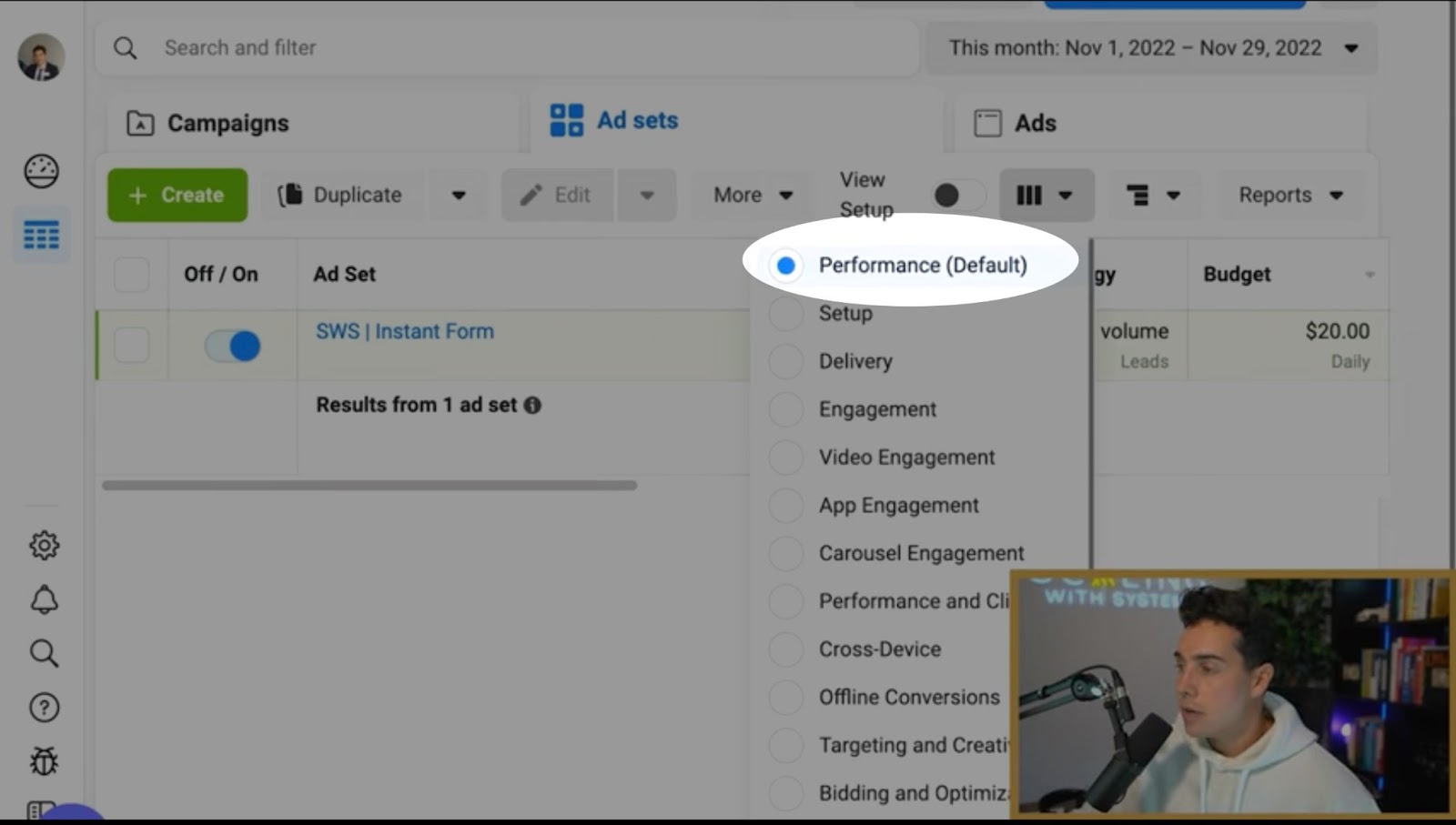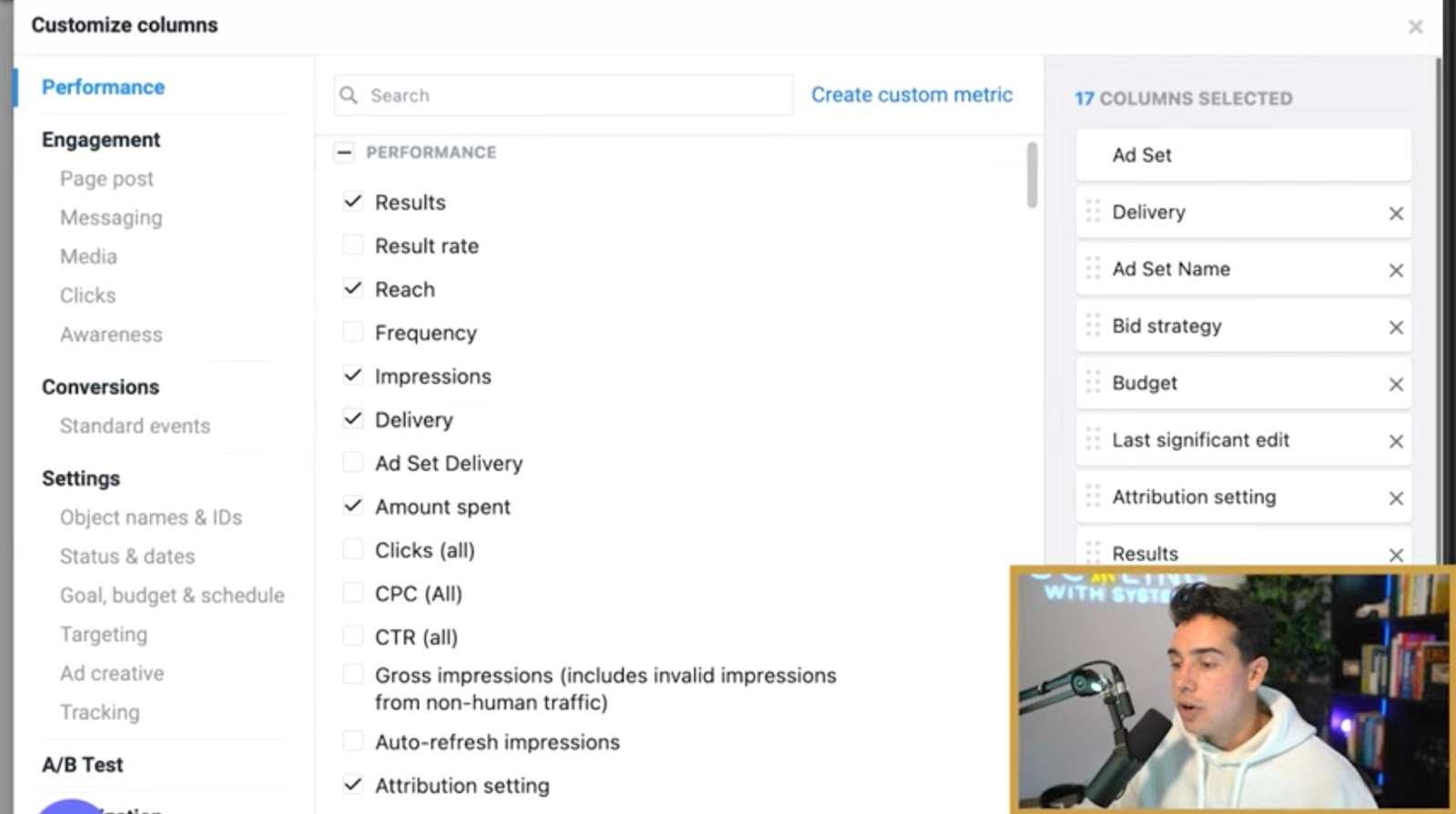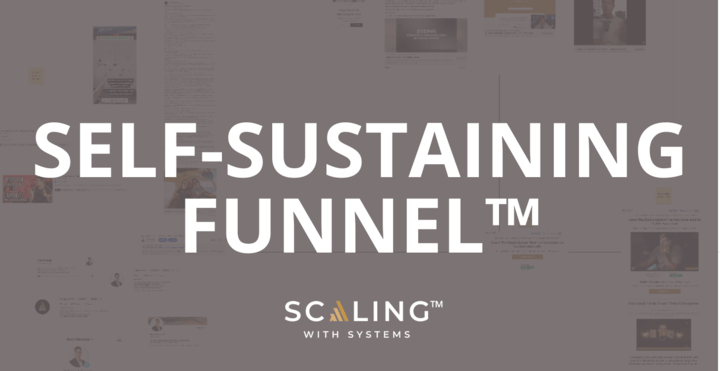Facebook is the most popular social media platform, with a monthly active user base of nearly 3 billion people. Facebook ads have been around for a while, so maybe you’re wondering, “do Facebook ads still work?”
The short answer: Yes!
With millions of businesses reaping 2x or 3x ROI from Facebook Ads, if you aren’t already leveraging them in your business, you’re missing out.
Driving meaningful results from campaigns needs attention to detail. You must be mindful of specific Facebook advertising metrics to bring out the desired call to action.
Some key performance indicators Facebook has already set for you by default. But not all metrics in Facebook Ads will help your business stay profitable.
In this article, we’ll share only KPI for Facebook Ads that should matter if you’re serious about growth. Also, you’ll learn how to set up these Facebook Ads metrics to extract the most important conclusions to continue to get high-quality leads and sales from these ads.
Facebook Advertising Metrics: What It Is and Why It Matters?
What Are Facebook Advertising Metrics?
Facebook ad metrics are quantitative data that help you reach a meaningful conclusion to measure ROI. Basically, you get important information on what is working and what isn’t to optimize your Facebook ads campaigns to get better results.
Facebook key performance indicators (KPIs) are ad metrics data specifically valuable for you.
For instance, as a service company, getting a booked call appointment might be a KPI for you. While the same doesn’t stand true for an e-commerce company.
Facebook key performance indicators (KPIs) examples:
- Cost Per Click (CPC)
- Cost per thousand impressions
- Reach
- Frequency
- Unique clicks
- Click Through Rate (CTR).
Why Do These Metrics Matter?
“Regardless of WHAT we do in our lives, our WHY—our driving purpose, cause or belief—never changes.” ― Simon Sinek.
You won’t know what to fix if you don’t understand why it matters in the first place. Thanks to Facebook, running ads is easy on the platform. But, to make an ad effective, you need to know the right metrics and why it matters to you.
Here are two big reasons why your KPI for Facebook Ads matters:
- Facebook ads reporting metrics help you gain insights into your ads performance.
- You can optimize your campaign and reach out to more people by measuring the correct KPIs.
6 Reasons Why Your Facebook Ads Campaign Fails
If you’re not getting the expected CPC or your ad reach is declining, you need to fix this asap. It can be challenging to know why your Facebook Ads campaign is not performing well. Here are six probable reasons to consider:
1. Ads Based On Emotion, Not Logic
Never make decisions for ads based on a hunch. Factual data should back it up – otherwise, you’re blindly trusting a feeling that has no basis in proof.
Because something feels right or good to you doesn’t mean it is how your target audience will act. For instance, maybe your ad creative looks beautiful to you. But in reality, a significant chunk of your target audience is distracted by the color choice and complexity.
Going by the logic and CTR data, you should change your ad creative or run an A/B test to confirm which ad design is actually resulting in more clicks.
2. A/B Testing The Wrong Way
A/B testing means comparing two variations of the same ad to determine which performs better.
This statistical method helps you make data-driven decisions and identify which Facebook advertising metrics need more effort from you. But, the problem arises when advertisers start doing it the wrong way:
- Testing More Than Two Variations: While checking more than two variations is perfectly okay, you shouldn’t do it simultaneously. A/B Testing more than two versions of an ad can complicate the equation, and you won’t be able to deduct any beneficial outcome.
- A/B Testing Too Early: Allow your ads to run through Facebook for a day or two before you start A/B testing it. Otherwise, you’ll be acting on half-knowledge — a dangerous thing.
- Stopping The Test After One Success: There’s always room for improvement. Don’t stop A/B testing even if you have found one ad copy or creative converting well. Rinse and repeat!
3. Boring Or Ineffective Ad Copy
Facebook doesn’t offer a lot of space to give detailed explanations about your offer or services. The title and description have a limit of 25 and 135 characters, respectively.
It would help if you said a lot in significantly less. And it makes writing compelling ad copy crucial. Even a tiny change in your ad copy can bring leads pouring in.
Here are two of the most desired qualities of a compelling ad copy:
- Propagating a clear value proposition
- Having a clear call-to-action (CTA)
4. Not Setting The Right Campaign Objective
Facebook allows you to choose between three campaign objectives: awareness, consideration, and conversion.
You should always choose the campaign objective based on your sales funnel process.
For instance, if the ads in your campaign aim to increase brand awareness, you should choose awareness as your campaign objective. Facebook will then show the ads to the right people, and your post engagement will increase, followed by more conversions.
5. Picking Too Small Audience To Target
It has become an unsaid rule that the smaller your targeting, the better your Facebook ad metrics, such as unique clicks, CTR, or reach, will perform. While it may be true in a general sense, sometimes you hit what advertisers call “ad fatigue.”
Ad fatigue: When a small group of people sees your ads repeatedly, the probability of conversions decreases after a certain number.
It happens because you may target a small audience, such as people who like your page, your subscribers, or people who have been on your website.
Always start with an audience, not too small or too broad, and then adapt as per the data of key performance indicators Facebook shows.
6. Not Targeting The Correct Audience
People buy with emotions but justify with their logic. You can’t sell a pen unless you perceivably create the need for the pen in the minds of your target audience.
Targeting is one of the most critical KPI for Facebook Ads.
You must target the right audience who can purchase your products or services. It starts with defining a clear buyer persona for your services or product.
You can also track the result of your past campaigns, which have performed well, and try to model their targeting.
How To Set Up Facebook Advertising Metrics
You know what key metrics for Facebook ads are, why it matters, and the probable reasons why your Facebook ads campaign fails. Here’s how to set up and track important Facebook ad metrics.
By identifying and isolating Facebook KPI metrics, you’ll be able to make data-driven (not emotional) decisions and learn what needs to be changed to make your campaign perform better.
Log in to your Facebook Ads Manager account and open your Facebook KPI dashboard. Most people reading this post have already run an ad on Facebook, but if you haven’t, it’s easy to set all of this up.
You’ll see several columns on your dashboard of Facebook advertiser performance metrics such as amount spent, result, cost per result, and cost per thousand impressions.
If you’ve never altered these columns, Facebook will show you the default setup, Performance.
Since you’re defining your Facebook advertising metrics, you should never use the default setup. Why? Because the default setup has a lot of information, you don’t need it. Also, some key metrics are not visible by default in this setup.

Setting Up Custom Columns To Get The Right Facebook Ads Metrics For Your Campaign
One of the reasons why you need to set up custom columns (or KPIs) is to match them with your sales funnel. Doing this will help you identify what variables are working and what aren’t.
For instance, your unique click-through rate wouldn’t perform well if people weren’t clicking on your ad to go to the opt-in page. In this case, A/B testing with ads would help.
To set up custom columns, scroll down to the bottom after clicking on the three-bar button and find the option “Customize Columns.”

Select the Facebook ads metrics you want to track and save this as a preset. For the sake of simplicity, the following are the exact metrics we track at Scaling With Systems.
- Amount Spent and Budget
- Results
- Cost Per Result
- Frequency
- Cost Per Thousand Impressions
- Reach
- Unique Link Clicks, Unique CTR, and Cost Per Unique Link Click
- Leads and Cost Per Lead
- Appointments Schedule and Cost Per Schedule.
Read on as we look more into these metrics in Facebook ads.
Delivery
This Facebook ad metric shows the current status of your ad. The four statuses that you’ll see:
- In draft
- Published and in review
- Approved and running
- Disapproved (and the reason).
Amount Spent and Budget
The Amount Spent metric is the dollars you spend on a particular ad. It would help if you always sorted it from highest to lowest so that the ads with the most Amount spent appear on the top.
The Budget column shows the maximum budget you’ve sent for the ad spend. For example, if your budget is $20 daily, Facebook won’t spend more than that.
Results
A result can be anything like the following:
- How much is your ad costing per message
- How much it costs you per lead
- How much it costs you per booked call.
By assessing the results, you can measure ROI and understand which ads are likely to bring more conversions to your business.
Cost Per Result
Cost per result is beneficial when running multiple ads in your campaign. It lets you see the cost incurred to get the desired action or “result.”
Frequency
Frequency is how often someone sees your ad. Remember, you’ll soon hit ad fatigue if your audience is too small.
Cost Per Thousand Impressions
Cost per thousand impressions is how expensive it is to run Facebook ads in front of a specific audience. For instance, if your audience is too targeted or small, this ad metric will be higher when you run the same ad on a broader audience.
Reach
Reach refers to the number of people who have seen the ad regardless of their interaction level. It’s quite a broad metric, so it’s not often looked at on its own.
Unique Link Clicks, Unique CTR, and Cost
These three Facebook advertising metrics will help you understand how effective your ad creative, such as the ad image or ad copy, is for the people to take action.
It would be best if you targeted at least 1% unique CTR. Otherwise, it’s going to be way too expensive for you.
Sometimes small changes in your ad creative and the copy can impact your Facebook ad campaign KPI. #ExperimentYourself
Leads And Cost Per Lead
The Leads column shows the number of leads generated. The cost per lead is the cost incurred to acquire that lead.
Appointments Schedule (And Cost)
The Appointments Schedule column schedules the number of booked calls or appointments from your ad. The cost per schedule shows how much it cost for someone to book a call.
Facebook Ad Metrics: FAQs
What Are The 4 Types Of Metrics?
1. Conversion rate: The percentage of people who take action after seeing your ad. You can calculate it by dividing the number of conversions by the number of clicks and then multiplying it by 100.
2. Reach: The number of people who see your Facebook ad.
3. Engagement: The measurement of people’s interaction with your Facebook ad.
4. Frequency: The number of times the same people see your Facebook ad.
Which Metrics Are Most Important?
With Facebook advertising, tracking the right metrics is essential to understand meaningful conclusions that will help you develop a better ad strategy and bring in better results. Ensure you track ROI, CPC, CTR, unique clicks, and impressions.
What Are The 4 Most Common Metric Units?
The 4 most common Facebook advertising metric units are conversion rate, unique clicks, cost per click, and impressions.
Wrapping Up: Facebook Ads Metrics
The Facebook advertising metrics we’ve outlined here are the ones you should track. Optimizing your ads according to these KPIs would help your business stay profitable and eventually scale.
Remember, Facebook ads are just like a math equation; it works when you know what variable to put in and how to run the formula.
You’re well on your way to scaling your business, and we’re here to help. At Scaling With Systems, we help our clients build profitable client acquisition systems that are guaranteed to give your fast and impactful results. To learn how we can help you develop a winning strategy, book a free consultation call, and one of our advisors will get back to you.



